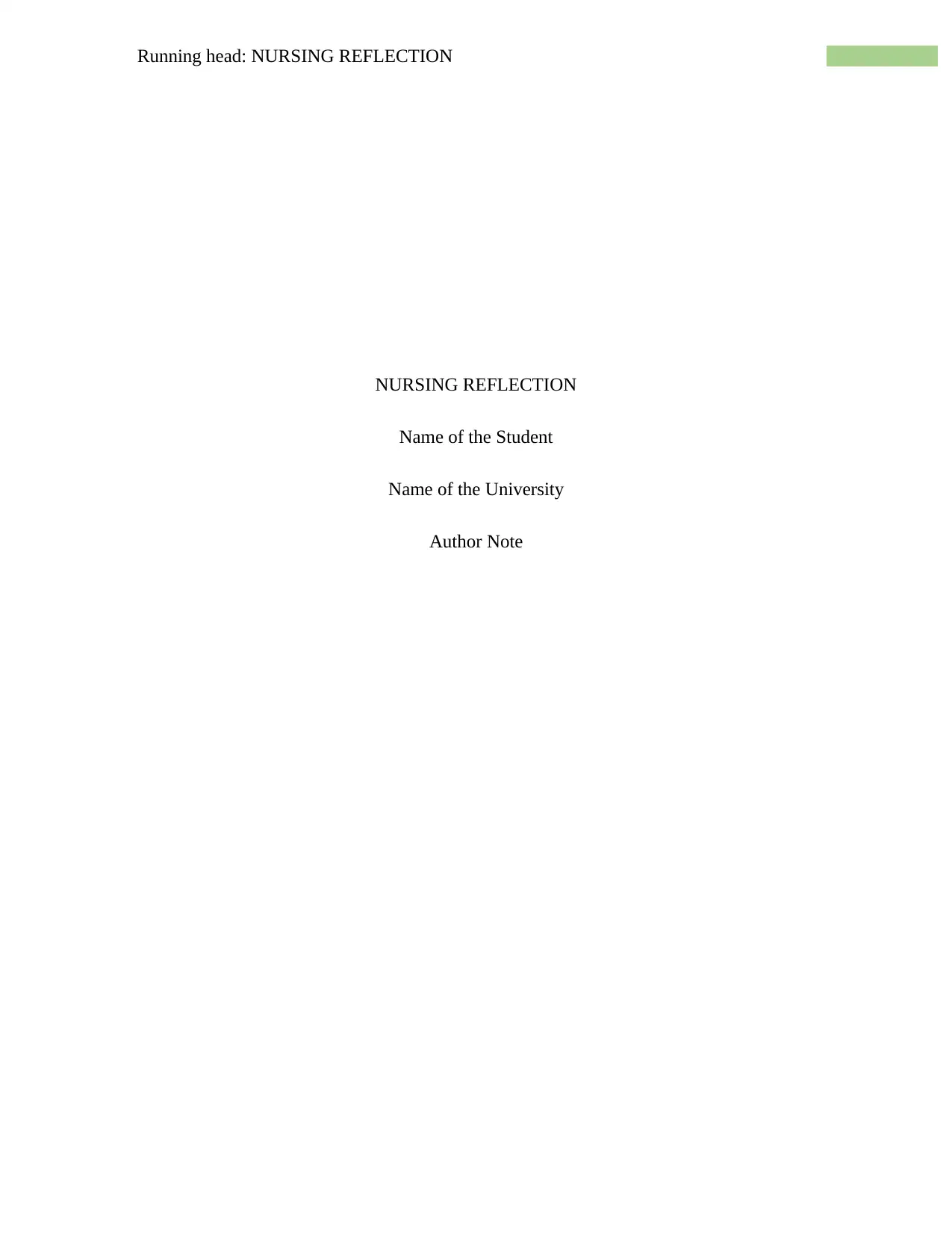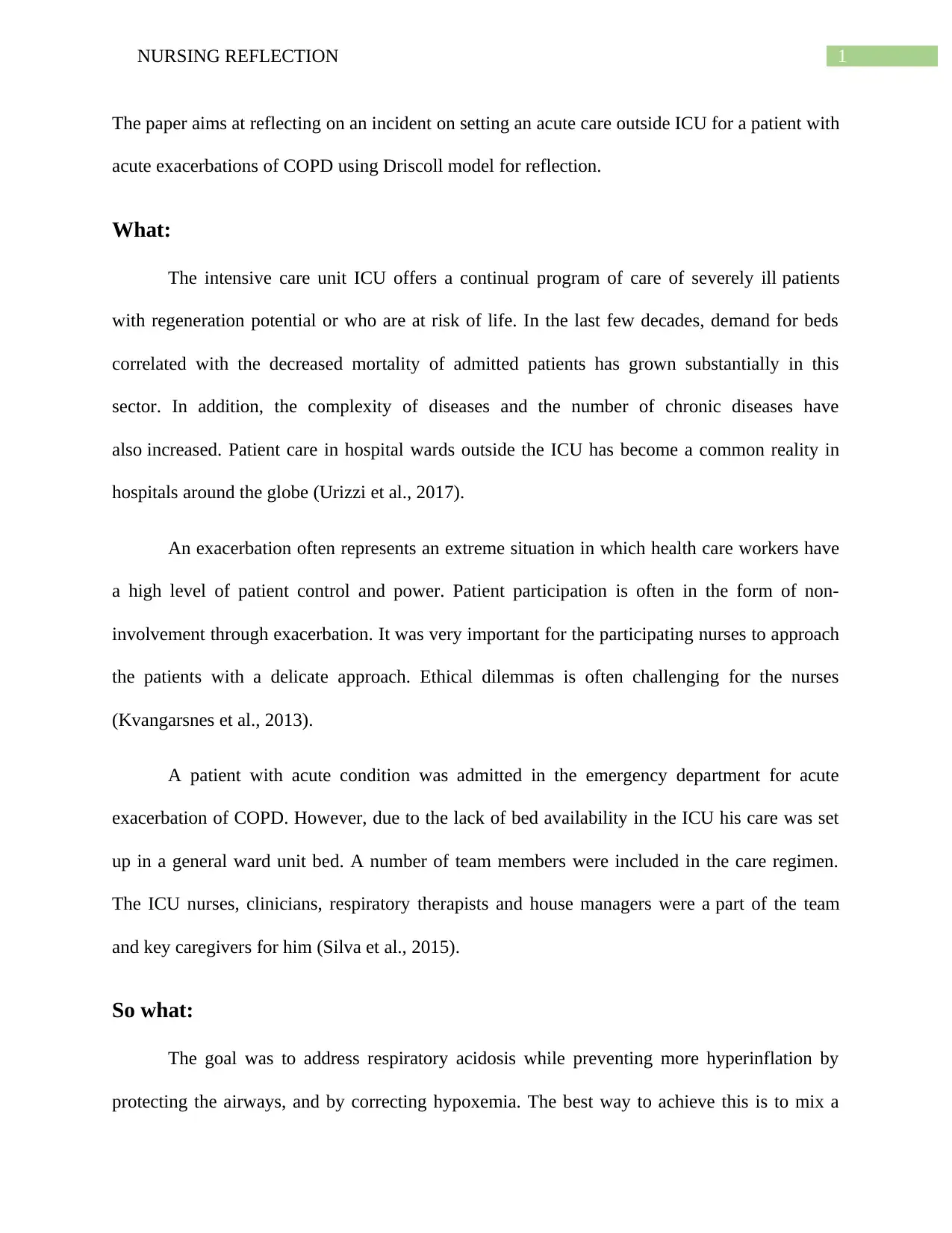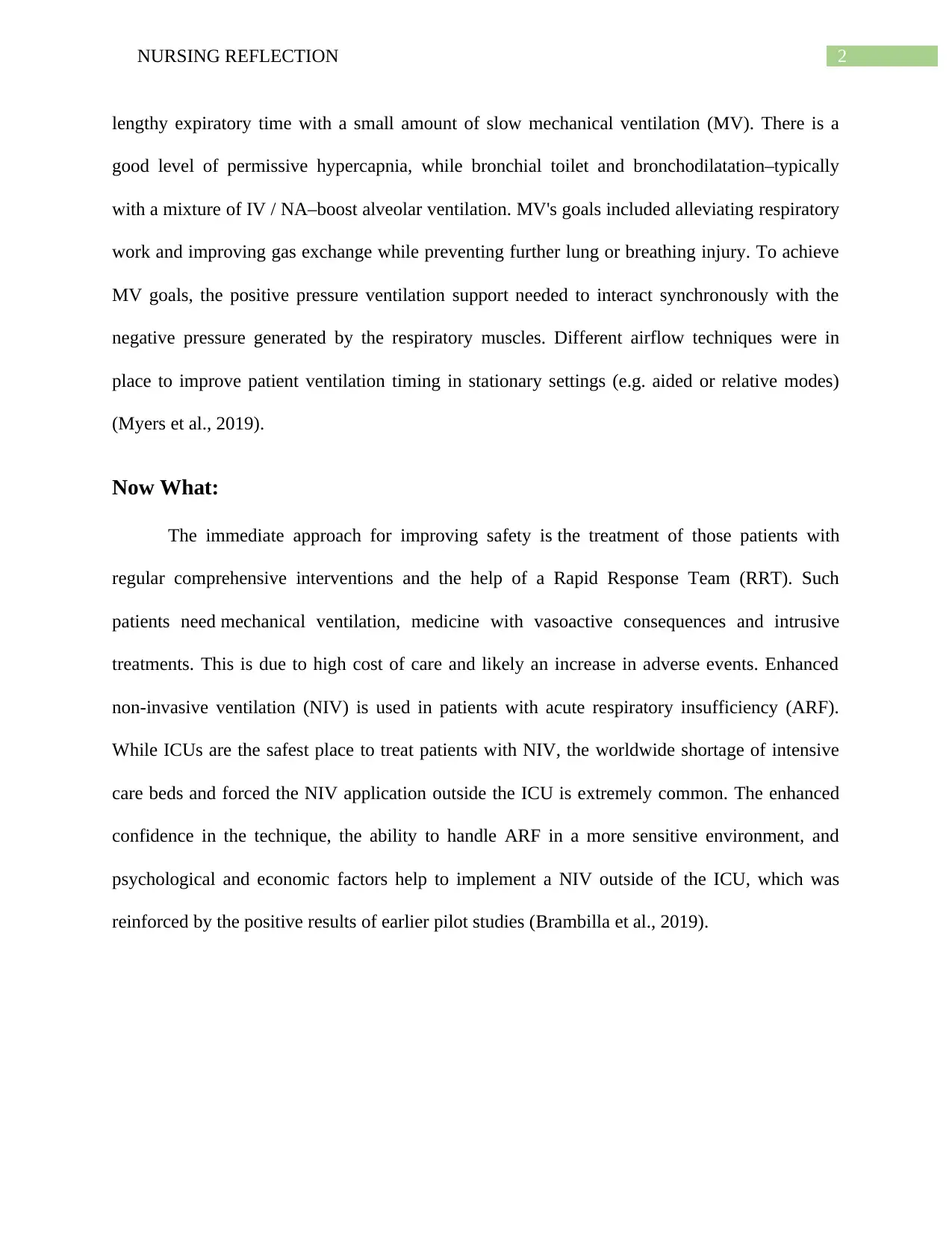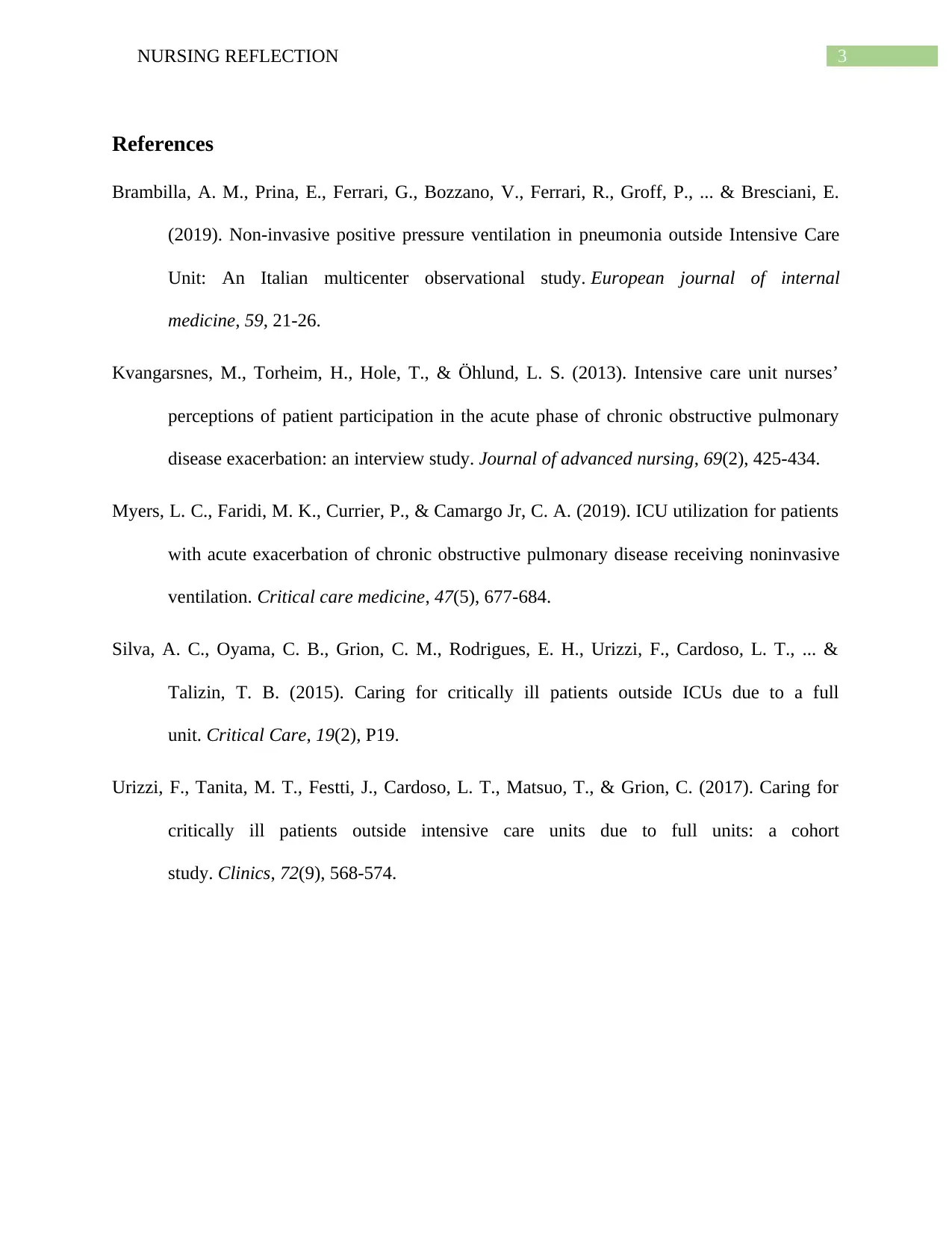Nursing Reflection on Acute COPD Exacerbation Care Outside ICU
VerifiedAdded on 2022/08/20
|4
|893
|12
Journal and Reflective Writing
AI Summary
This nursing reflection paper analyzes a case involving a patient with an acute exacerbation of COPD who was admitted to a general ward due to ICU bed unavailability. The paper utilizes Driscoll's model of reflection to examine the complexities of providing care in this setting, including the involvement of a multidisciplinary team comprising ICU nurses, clinicians, respiratory therapists, and house managers. The focus is on addressing respiratory acidosis, preventing hyperinflation, and correcting hypoxemia through mechanical ventilation (MV) and non-invasive ventilation (NIV). The reflection discusses the goals of MV, different airflow techniques, and the use of NIV outside the ICU, highlighting the importance of comprehensive interventions and the role of a Rapid Response Team (RRT). The paper references several studies that support the use of NIV in such scenarios and emphasizes the ethical considerations faced by nurses in managing these complex cases.
1 out of 4











![[object Object]](/_next/static/media/star-bottom.7253800d.svg)